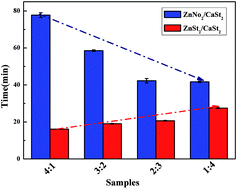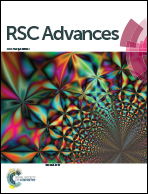Highly efficient and antibacterial zinc norfloxacin thermal stabilizer for poly(vinyl chloride)
Abstract
A novel kind of highly efficient and antibacterial thermal stabilizer, zinc norfloxacin (Zn(C16H17FN3O3)2·4H2O, represented as ZnNo2), for poly(vinyl chloride) (PVC) was first reported in this paper; the structure of which was characterized by Fourier-transform infrared (FTIR) spectroscopy, thermogravimetric analysis (TGA), elemental analysis, scanning electron microscopy (SEM), X-ray diffraction (XRD) and laser particle size analysis. ZnNo2 extended the thermal stability of PVC and had good synergetic effects with calcium stearate (CaSt2) on decreasing the releasing rate of HCl from PVC, which were confirmed by the results of thermal stability research including the Congo red test, discoloration, dehydrochlorination test and visible spectroscopy. The thermal stability mechanism of ZnNo2 and CaSt2 on PVC was proposed in this paper. The best auxiliary thermal stabilizer was the compound of dibenzoylmethane (DBM), pentaerythritol (PET) and triphenylphosphate (TPP) for ZnNo2/CaSt2 with both acceptable initial color and long-term stability for PVC products. Importantly, the inhibition zone test showed that ZnNo2 had good antibacterial activity against Escherichia coli and Staphylococcus aureus, even in PVC with low concentrations.


 Please wait while we load your content...
Please wait while we load your content...